Naman Khetan
Implicit Equivariance in Convolutional Networks
Nov 28, 2021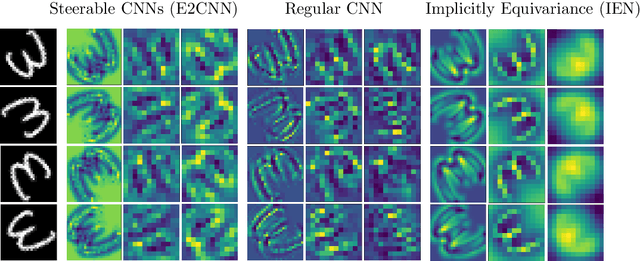
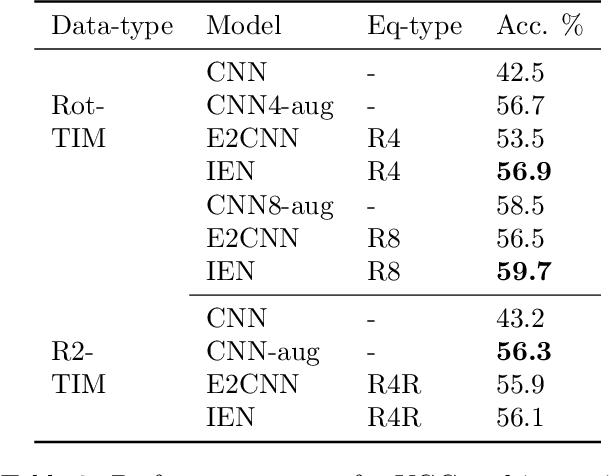
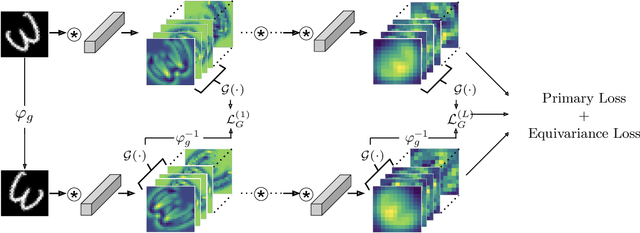
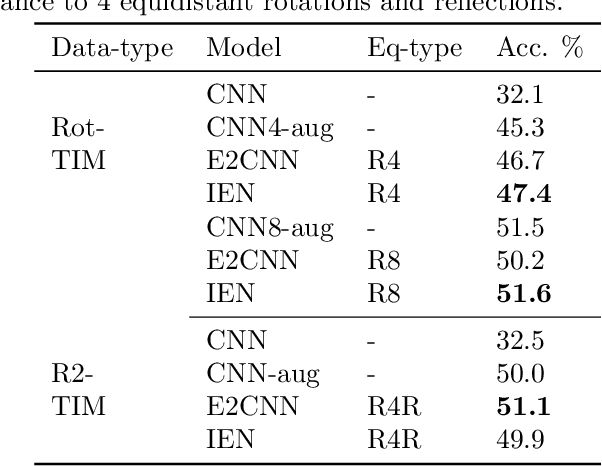
Abstract:Convolutional Neural Networks(CNN) are inherently equivariant under translations, however, they do not have an equivalent embedded mechanism to handle other transformations such as rotations and change in scale. Several approaches exist that make CNNs equivariant under other transformation groups by design. Among these, steerable CNNs have been especially effective. However, these approaches require redesigning standard networks with filters mapped from combinations of predefined basis involving complex analytical functions. We experimentally demonstrate that these restrictions in the choice of basis can lead to model weights that are sub-optimal for the primary deep learning task (e.g. classification). Moreover, such hard-baked explicit formulations make it difficult to design composite networks comprising heterogeneous feature groups. To circumvent such issues, we propose Implicitly Equivariant Networks (IEN) which induce equivariance in the different layers of a standard CNN model by optimizing a multi-objective loss function that combines the primary loss with an equivariance loss term. Through experiments with VGG and ResNet models on Rot-MNIST , Rot-TinyImageNet, Scale-MNIST and STL-10 datasets, we show that IEN, even with its simple formulation, performs better than steerable networks. Also, IEN facilitates construction of heterogeneous filter groups allowing reduction in number of channels in CNNs by a factor of over 30% while maintaining performance on par with baselines. The efficacy of IEN is further validated on the hard problem of visual object tracking. We show that IEN outperforms the state-of-the-art rotation equivariant tracking method while providing faster inference speed.
Robust Quadrupedal Locomotion on Sloped Terrains: A Linear Policy Approach
Nov 10, 2020
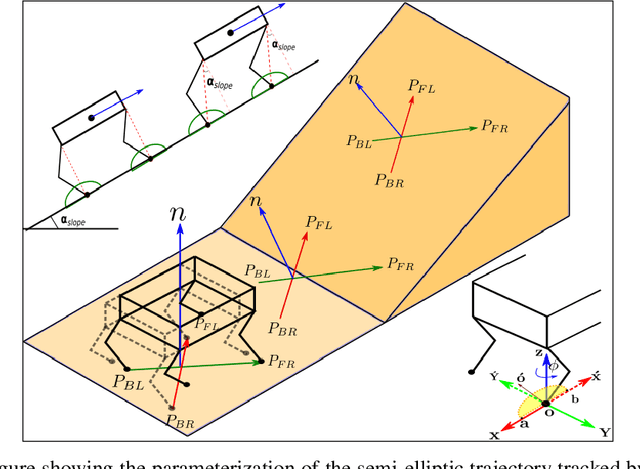
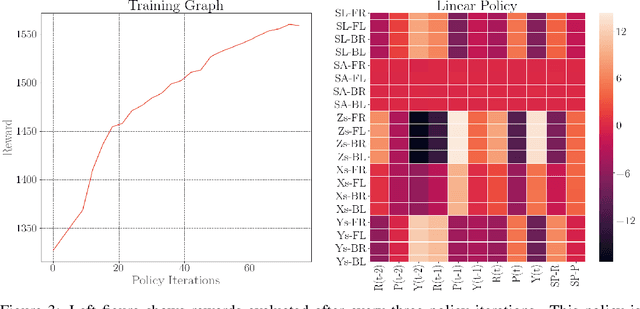
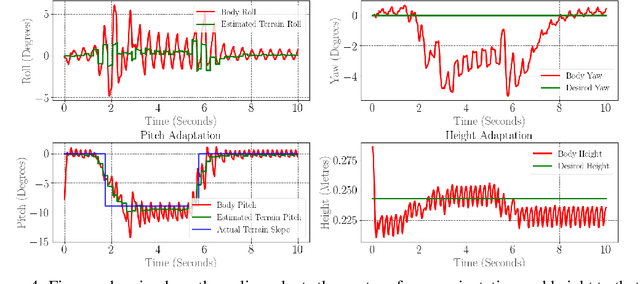
Abstract:In this paper, with a view toward fast deployment of locomotion gaits in low-cost hardware, we use a linear policy for realizing end-foot trajectories in the quadruped robot, Stoch $2$. In particular, the parameters of the end-foot trajectories are shaped via a linear feedback policy that takes the torso orientation and the terrain slope as inputs. The corresponding desired joint angles are obtained via an inverse kinematics solver and tracked via a PID control law. Augmented Random Search, a model-free and a gradient-free learning algorithm is used to train this linear policy. Simulation results show that the resulting walking is robust to terrain slope variations and external pushes. This methodology is not only computationally light-weight but also uses minimal sensing and actuation capabilities in the robot, thereby justifying the approach.
 Add to Chrome
Add to Chrome Add to Firefox
Add to Firefox Add to Edge
Add to Edge